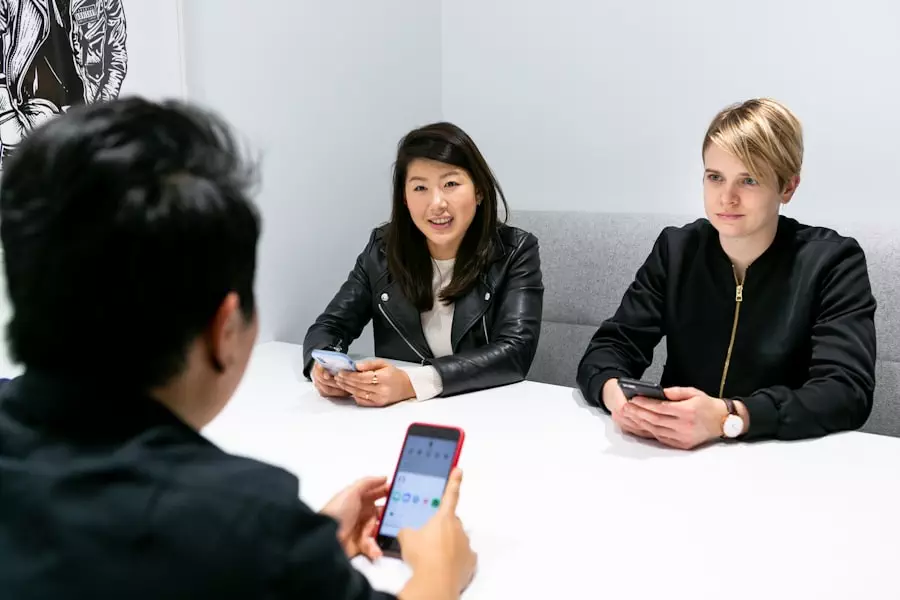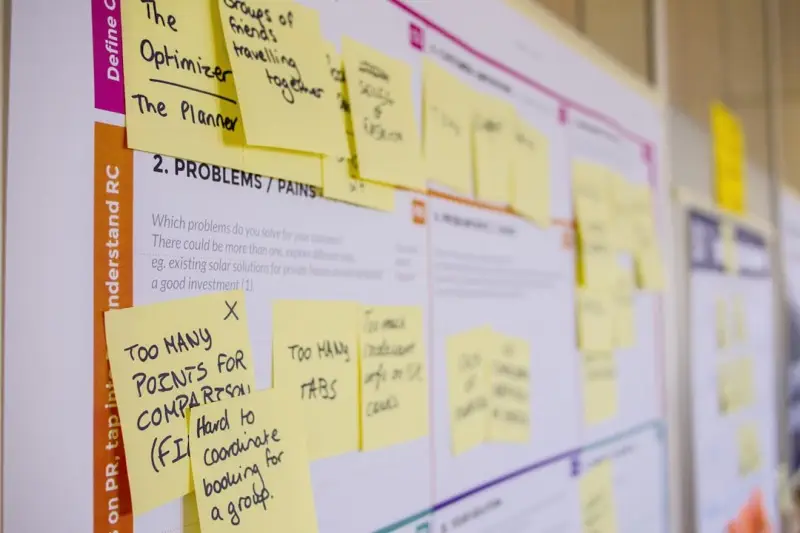Content design is a complex field that extends beyond just producing content. It takes a comprehensive approach, requiring a thorough understanding of user needs, business goals, and the skill of creating experiences that connect with the audience. Content designers play a crucial role in shaping the story and structure of digital experiences, making sure the content is not only informative and educational but also engaging and enjoyable for users. They act as architects of the user journey, leading people through smooth and significant interactions.
At the heart of content design lies the recognition that content is not just a static element, but a powerful tool for creating impactful and memorable user experiences. Content designers must possess a keen eye for detail, a deep understanding of human behavior, and the ability to translate complex information into engaging and accessible formats. They must be able to balance the needs of the user with the goals of the business, creating content that not only satisfies the audience but also supports the organization’s overall strategy.
The role of a content designer is multifaceted, encompassing everything from content strategy and information architecture to copywriting and user experience design. They must be adept at navigating the ever-evolving digital landscape, staying abreast of emerging trends and technologies, and continuously refining their craft to meet the changing needs of users. By embracing this holistic approach, content designers can create content experiences that truly resonate with their audience and drive meaningful engagement.
Key Takeaways
- Content design is about creating impactful and memorable user experiences through strategic and intentional content creation.
- A content designer plays a crucial role in bridging the gap between user needs and business objectives, ensuring that content meets both sets of requirements.
- Crafting compelling and coherent content strategies is essential for creating a consistent and engaging user experience across digital platforms.
- Mastering the art of storytelling in digital experiences is key to capturing and retaining user attention, and creating a lasting impact.
- Optimizing content for seamless user journeys is vital for ensuring that users can easily navigate and engage with digital content.
Bridging the Gap Between User Needs and Business Objectives
Effective content design requires a delicate balance between understanding user needs and aligning with business goals. Content designers must possess the ability to empathize with the target audience, identifying their pain points, preferences, and expectations. This deep understanding of the user is essential for creating content that not only informs and educates but also engages and delights.
At the same time, content designers must be acutely aware of the organization’s business objectives, ensuring that the content they create supports the overall strategy and contributes to the company’s success. This alignment between user needs and business goals is crucial, as it ensures that the content not only resonates with the audience but also aligns with the organization’s priorities.
By bridging this gap, content designers can create content that strikes a perfect balance between user satisfaction and business success. They must be skilled at translating complex information into easily digestible formats, while also ensuring that the content aligns with the brand’s identity and values. This requires a deep understanding of the target audience, as well as a keen eye for detail and a commitment to continuous improvement.
Through this delicate balancing act, content designers can create content that not only meets the needs of the user but also supports the organization’s overarching goals. By fostering this symbiotic relationship between user and business, content designers can drive meaningful engagement, build brand loyalty, and ultimately contribute to the organization’s long-term success.
Crafting Compelling and Coherent Content Strategies
Developing a comprehensive content strategy is a crucial aspect of the content designer’s role. This involves defining the content’s purpose, tone, and voice, as well as aligning it with the brand’s identity and values. Effective content strategies consider the entire user journey, from initial awareness to post-conversion engagement, ensuring that the content is consistent, cohesive, and tailored to the specific needs of the audience at each stage of the journey.
Content designers must possess a deep understanding of the target audience, their pain points, and their preferred modes of engagement. By leveraging this knowledge, they can create content that resonates with the user, addressing their needs and guiding them through the digital landscape with ease. This requires a keen eye for detail, a strong grasp of storytelling techniques, and the ability to translate complex information into engaging and accessible formats.
Moreover, content designers must ensure that the content they create aligns with the organization’s overall business objectives. This involves collaborating closely with stakeholders, including marketing teams, subject matter experts, and other cross-functional partners, to ensure that the content not only meets user needs but also supports the broader strategic goals of the organization. By striking this balance, content designers can create content that not only informs and educates but also inspires and motivates the audience to take desired actions.
The art of crafting compelling and coherent content strategies is a continuous process, requiring ongoing refinement and optimization. Content designers must be agile, responsive, and willing to adapt to changing user needs and market trends. By embracing this iterative approach, they can create content experiences that remain relevant, engaging, and impactful, even as the digital landscape continues to evolve.
Mastering the Art of Storytelling in Digital Experiences
Storytelling is a powerful tool in the content designer’s arsenal. By crafting narratives that captivate and inspire users, content designers can create memorable and impactful experiences. Successful content designers understand the art of weaving together information, emotion, and visual elements to create a cohesive and engaging story. This approach helps users connect with the content on a deeper level, fostering brand loyalty and driving desired actions.
The art of storytelling in digital experiences goes beyond simply presenting information; it involves creating a narrative that resonates with the audience and draws them into the content. Content designers must possess a deep understanding of human psychology, recognizing that people are naturally drawn to stories that evoke emotions, spark their imagination, and provide a sense of connection.
By leveraging the power of storytelling, content designers can create content that not only informs and educates but also inspires and motivates the audience. This can involve crafting compelling narratives that highlight the brand’s values, showcasing customer success stories that demonstrate the product’s or service’s impact, or weaving together informative content with emotive elements to create a holistic and engaging experience.
Mastering the art of storytelling in digital experiences requires a multifaceted skillset. Content designers must be adept at crafting compelling copy, selecting visuals that enhance the narrative, and structuring the content in a way that guides the user through a seamless and captivating journey. By blending these elements together, they can create content that resonates with the audience on a deeper level, fostering a stronger connection with the brand and driving meaningful engagement.
Optimizing Content for Seamless User Journeys
| Metrics | Data |
|---|---|
| Website Traffic | 10,000 monthly visitors |
| User Engagement | Average session duration: 2 minutes |
| Conversion Rate | 5% of visitors convert to customers |
| User Satisfaction | 90% positive feedback in user surveys |
Content designers must consider the user’s entire experience, ensuring that the content is optimized for seamless navigation and engagement. This involves structuring the content in a logical and intuitive manner, using clear and concise language, and incorporating visual elements that enhance the user experience.
By focusing on the user journey, content designers can create content that guides users effortlessly through the digital landscape, reducing friction and enhancing overall satisfaction. This requires a deep understanding of user behavior, as well as a keen eye for detail and a commitment to continuous improvement.
One of the key aspects of optimizing content for seamless user journeys is the organization and structure of the content. Content designers must carefully consider the information architecture, ensuring that the content is presented in a logical and intuitive manner that aligns with the user’s mental model. This may involve breaking down complex information into digestible chunks, using clear and concise headings, and incorporating visual cues to guide the user through the content.
Additionally, content designers must pay close attention to the language and tone used throughout the content. By using clear and accessible language, they can ensure that the content is easily understood by the target audience, reducing the risk of confusion or frustration. Furthermore, the tone and voice of the content should be aligned with the brand’s identity and the user’s preferences, creating a cohesive and engaging experience.
Finally, the incorporation of visual elements, such as images, graphics, and multimedia, can greatly enhance the user experience. Content designers must carefully select and integrate these elements to complement the content, providing visual cues and reinforcing the overall narrative. By optimizing the content for seamless user journeys, content designers can create experiences that are not only informative and engaging but also intuitive and effortless for the user.
Leveraging Data and Analytics to Refine Content Experiences
Data and analytics play a crucial role in the content designer’s toolkit. By analyzing user behavior, engagement metrics, and content performance, content designers can gain valuable insights into what resonates with the audience and what areas need improvement. Leveraging data-driven insights allows content designers to make informed decisions, continuously refining and optimizing the content experiences to better meet user needs and achieve business objectives.

One of the key benefits of leveraging data and analytics is the ability to understand user behavior and preferences. By tracking metrics such as page views, time spent on page, and conversion rates, content designers can identify patterns and trends that inform their content strategy. This data can reveal which content formats, topics, and messaging resonate most with the audience, enabling content designers to create more targeted and effective content experiences.
Moreover, data and analytics can provide valuable insights into the overall performance of the content. By analyzing metrics such as bounce rate, exit rate, and user flow, content designers can identify areas of friction or drop-off within the user journey. This information can then be used to refine the content, optimize the user experience, and enhance the overall effectiveness of the digital experiences.
In addition to quantitative data, content designers can also leverage qualitative insights, such as user feedback and usability testing, to further refine the content experiences. By gathering direct input from the audience, content designers can gain a deeper understanding of their needs, pain points, and preferences, allowing them to create content that truly resonates and drives meaningful engagement.
By embracing a data-driven approach, content designers can continuously iterate and improve their content experiences, ensuring that they remain relevant, engaging, and effective in meeting the evolving needs of the audience. This iterative process is essential in the fast-paced digital landscape, where user expectations and market trends are constantly shifting.
Collaborating Across Disciplines for Holistic Design Solutions
Content design is not an isolated discipline; it requires close collaboration with various teams, including UX designers, developers, marketers, and subject matter experts. By working together, content designers can create holistic design solutions that seamlessly integrate content, functionality, and visual elements.
This cross-functional approach ensures that the content is not only compelling but also technically sound, visually appealing, and strategically aligned with the overall business goals. Content designers must be skilled communicators, able to bridge the gap between different disciplines and ensure that all team members are working towards a common objective.
One of the key benefits of this collaborative approach is the ability to leverage the unique expertise and perspectives of each team member. UX designers can provide insights into user behavior and preferences, helping content designers create content that aligns with the overall user experience. Developers can offer technical expertise, ensuring that the content is optimized for performance and accessibility. Marketers can contribute their knowledge of brand positioning and messaging, while subject matter experts can provide deep insights into the industry and the target audience.
By bringing these diverse perspectives together, content designers can create holistic design solutions that address the needs of the user, the business, and the technical requirements of the digital platform. This collaborative approach also fosters a sense of shared ownership and accountability, ensuring that the content experiences are the result of a collective effort rather than the work of a single individual.
Moreover, this cross-functional collaboration can lead to innovative and unexpected solutions. By challenging each other’s assumptions and exploring new ideas, the team can push the boundaries of what is possible in the digital realm, creating content experiences that truly stand out and resonate with the audience.
Staying Ahead of Evolving User Expectations and Trends
The digital landscape is constantly evolving, and content designers must be proactive in staying informed about emerging trends, technologies, and user behaviors. This requires continuous learning, experimentation, and a willingness to adapt to changing user needs and preferences.
By anticipating and responding to these changes, content designers can create content experiences that remain relevant, engaging, and impactful, even as the digital landscape continues to evolve. This agility and adaptability are essential in an industry where user expectations are constantly shifting and new technologies are constantly emerging.
One of the key ways that content designers can stay ahead of the curve is by closely monitoring industry trends and user behavior. This may involve staying up-to-date with the latest research, attending industry events and conferences, and engaging with the broader design community. By immersing themselves in the latest developments and insights, content designers can identify emerging patterns and anticipate the changing needs of their audience.
Additionally, content designers must be willing to experiment and embrace new technologies and platforms. This may involve exploring the potential of emerging technologies, such as artificial intelligence, virtual reality, and voice interfaces, to create even more immersive and personalized content experiences. By staying at the forefront of these innovations, content designers can position themselves as thought leaders and innovators within the industry.
Moreover, content designers must be attuned to the evolving preferences and behaviors of their target audience. This may involve conducting user research, gathering feedback, and continuously monitoring user engagement metrics. By understanding how their audience’s needs and expectations are changing over time, content designers can adapt their content strategies and create experiences that remain relevant and impactful.
Ultimately, the ability to stay ahead of evolving user expectations and trends is a critical skill for content designers. By embracing a mindset of continuous learning and adaptation, they can create content experiences that not only meet the current needs of their audience but also anticipate and exceed their future expectations.
The Future of Content Design: Shaping the Digital Landscape
As the role of content design continues to grow in importance, content designers will play a pivotal role in shaping the future of digital experiences. They will be responsible for crafting content that not only informs and entertains but also inspires and empowers users.
The future of content design will likely involve the integration of emerging technologies, such as artificial intelligence, virtual reality, and voice interfaces, to create even more immersive and personalized content experiences. Content designers will need to embrace these innovations and leverage them to push the boundaries of what is possible in the digital realm.
One of the key areas where content designers will have a significant impact is in the realm of personalization and adaptive content. By leveraging data and AI-powered algorithms, content designers will be able to create highly personalized content experiences that cater to the unique needs and preferences of each individual user. This will involve the dynamic generation and optimization of content, ensuring that the user is presented with the most relevant and engaging information at every stage of their journey.
Moreover, the integration of virtual reality and augmented reality technologies will open up new frontiers for content design. Content designers will be tasked with creating immersive, interactive experiences that blur the lines between the digital and physical worlds. This will require a deep understanding of spatial design, user interaction, and the art of storytelling in these emerging mediums.
As voice interfaces and conversational AI continue to evolve, content designers will also play a crucial role in shaping the future of voice-based content experiences. They will need to develop content strategies that seamlessly integrate with these technologies, creating natural and intuitive interactions that enhance the user’s overall experience.
Beyond these technological advancements, the future of content design will also be shaped by the growing emphasis on social responsibility and sustainability. Content designers will be expected to create content that not only engages and entertains but also educates, inspires, and empowers users to make a positive impact on the world around them. This will involve the integration of ethical considerations, environmental awareness, and a commitment to diversity and inclusion.
As the digital landscape continues to evolve, content designers will be at the forefront of shaping the future of user experiences. By embracing emerging technologies, fostering cross-disciplinary collaboration, and staying attuned to the changing needs and expectations of their audience, content designers will play a pivotal role in creating content experiences that are not only impactful and memorable but also transformative and empowering.
FAQs
What is the role of a content designer?
A content designer is responsible for creating and shaping the content that users interact with on digital platforms. This includes writing and editing copy, as well as ensuring that the content aligns with the overall user experience and brand messaging.
What are the key responsibilities of a content designer?
Key responsibilities of a content designer include collaborating with designers and developers to create user-friendly content, conducting user research to understand user needs and behaviors, and continuously iterating and improving content based on user feedback and data.
How does a content designer contribute to creating impactful user experiences?
A content designer contributes to impactful user experiences by crafting clear and engaging content that guides users through digital interfaces, communicates important information effectively, and aligns with the overall design and functionality of the product or platform.
What skills are important for a content designer?
Important skills for a content designer include strong writing and editing abilities, a deep understanding of user experience principles, proficiency in content management systems and design tools, and the ability to collaborate effectively with cross-functional teams.
Why is the role of a content designer important in digital product development?
The role of a content designer is important in digital product development because well-crafted content is essential for creating intuitive and engaging user experiences. Content designers ensure that the right information is presented in the right way to help users achieve their goals and form positive impressions of the product or platform.
Blog Posts











